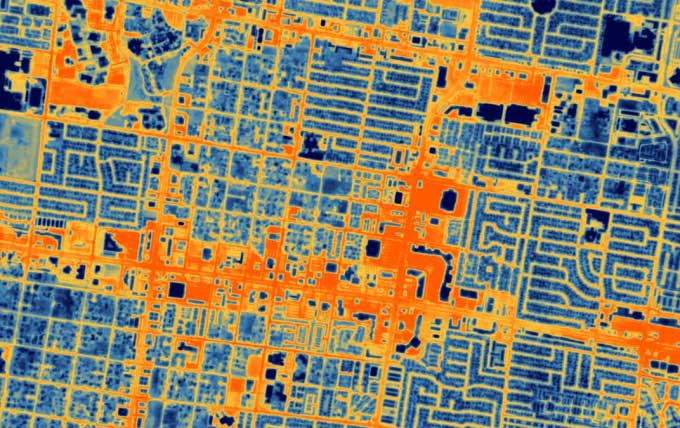SatVu, the company operating the HOTSAT-1 satellite, announced on December 15 that the satellite encountered issues just six months after its launch into orbit.

Thermal impact of large parking lots in Las Vegas recorded by HOTSAT-1. (Photo: HOTSAT-1 Satellite/SatVu)
HOTSAT-1 was launched into orbit by a SpaceX Falcon 9 rocket from Vandenberg Space Force Base in California back in June. This satellite is a cube approximately 1 meter on each side, orbiting in a polar trajectory that allows it to observe every point on Earth almost simultaneously each day. It is regarded as the most advanced space thermometer in the world, astonishing scientists upon becoming operational.
The first images from HOTSAT-1 were released in early October, revealing unprecedented details of temperature changes on the Earth’s surface. With the ability to analyze details as small as 3.5 meters, HOTSAT-1’s camera enables scientists to visualize the thermal impact of parking lots on surrounding buildings or the cooling effect of ports.
The camera also provides information on wildfires and even impressively recorded the thermal trail of a train running on a main railway line in Chicago. Mapping the heat emitted from various structures contributes to improvements that enhance energy efficiency and reduce carbon emissions.
However, HOTSAT-1 encountered issues just 6 months after launch. The source of the malfunction has not been disclosed, but the affected system is the satellite’s valuable thermal camera, which ceased operation earlier this week.
Engineers at SatVu, a London-based company, are still in contact with the satellite but do not expect it to resume operations. SatVu is collaborating with Surrey Satellite Technology, the UK company that built HOTSAT-1, to assess the problem.
Nonetheless, the early demise of HOTSAT-1 is not the end. The satellite was insured, and SatVu plans to launch a replacement satellite as early as 2025. SatVu aims to operate a constellation of 8 to 10 temperature-monitoring satellites, assisting scientists, planners, and other stakeholders in monitoring detailed temperature changes on Earth every day.



















































